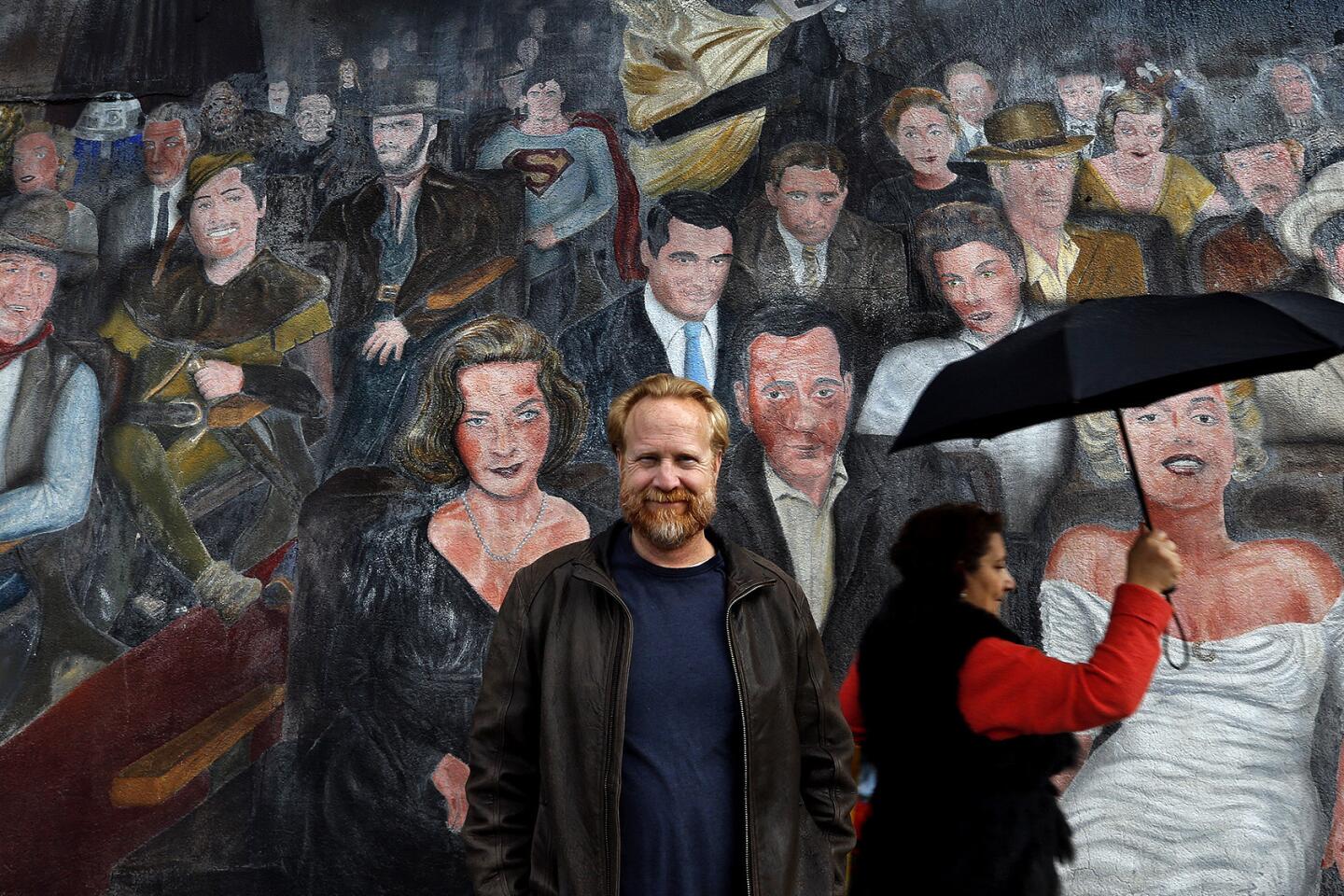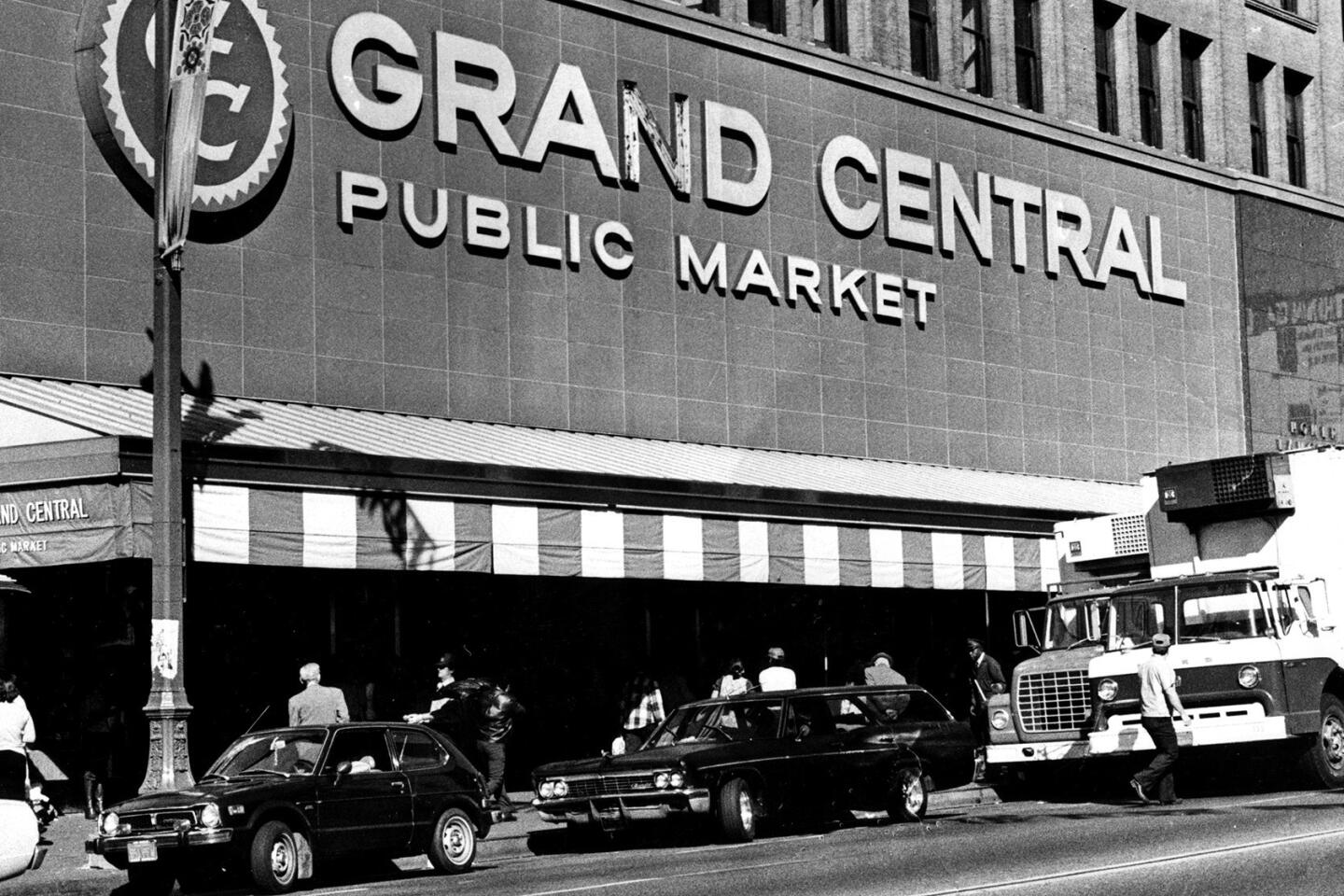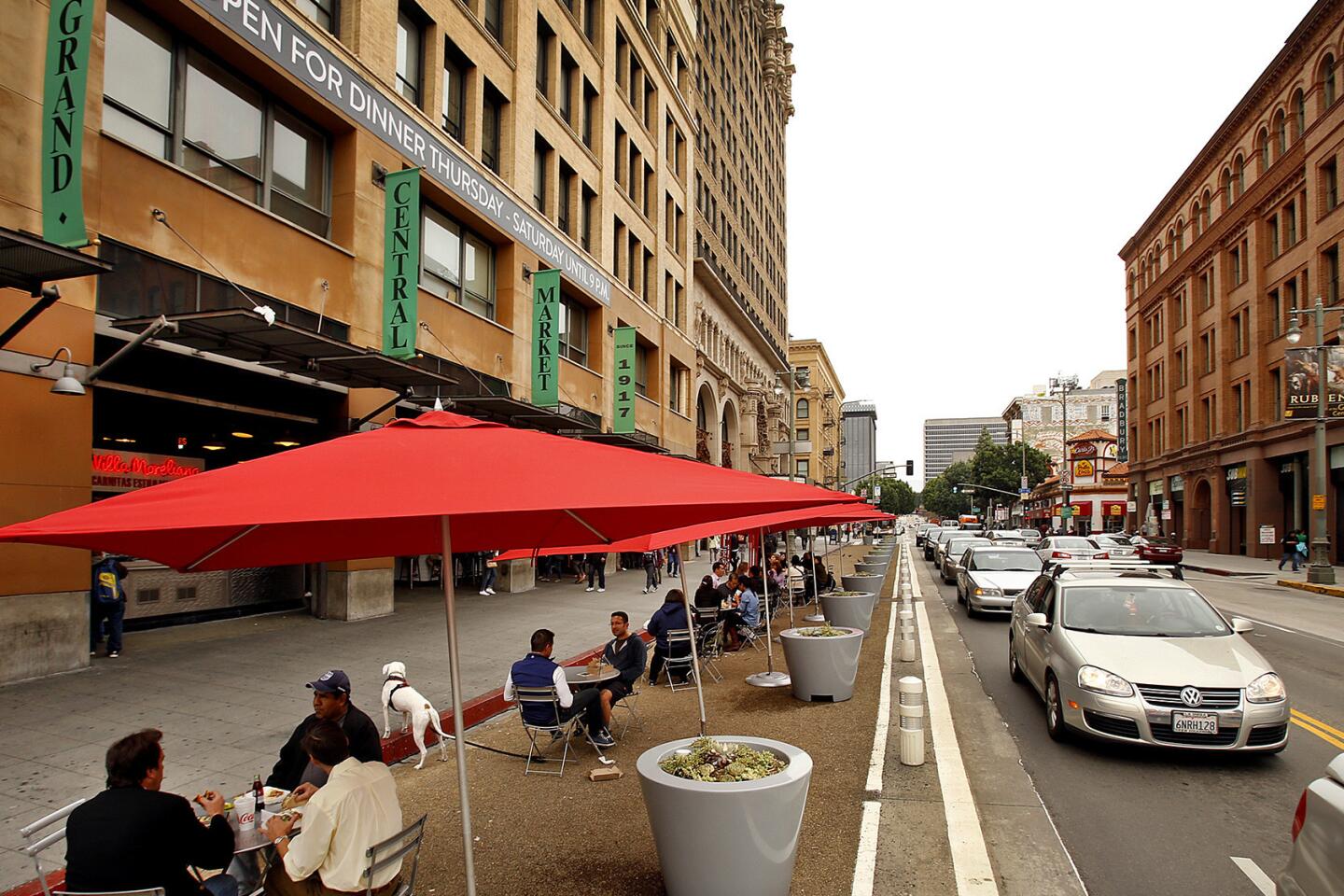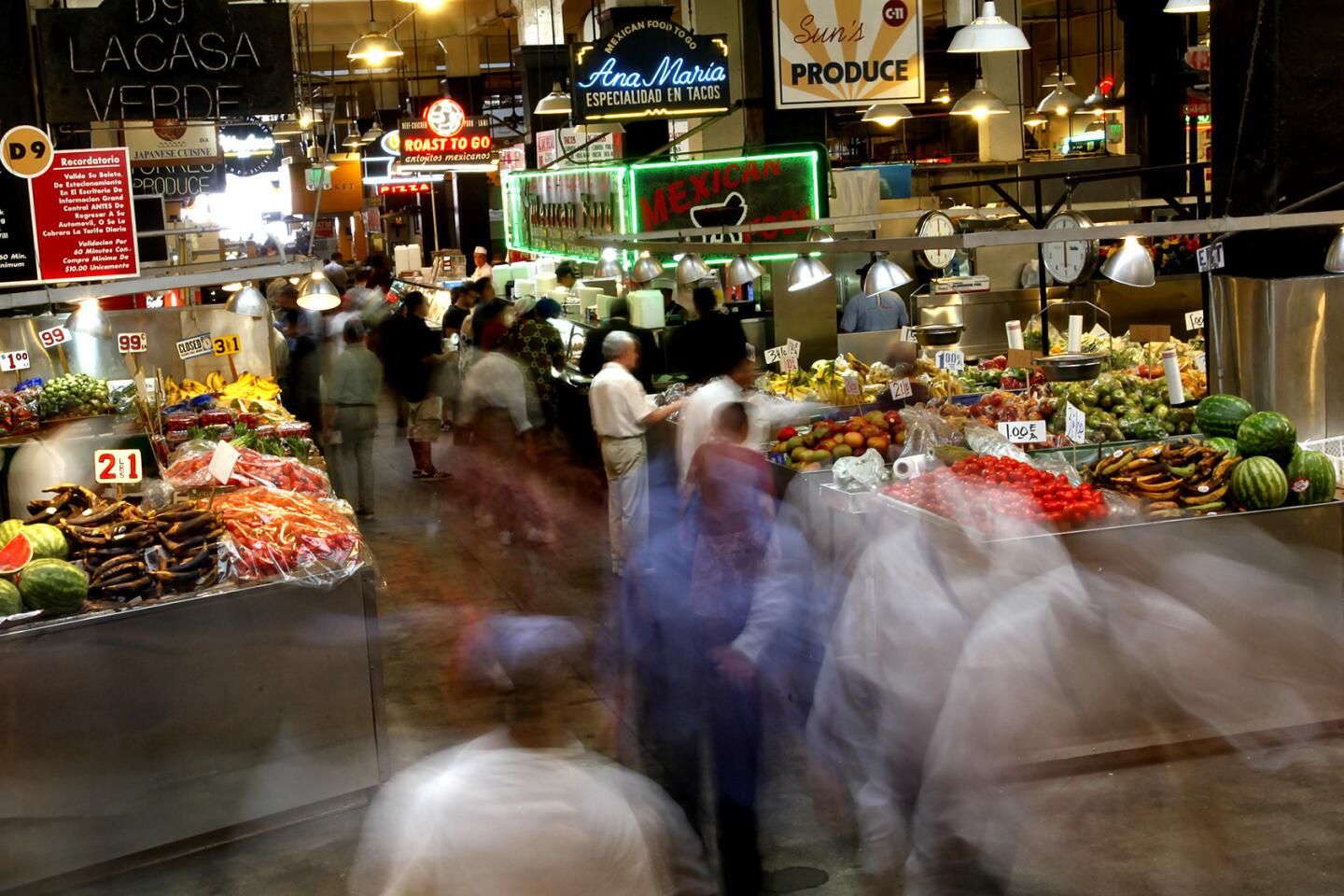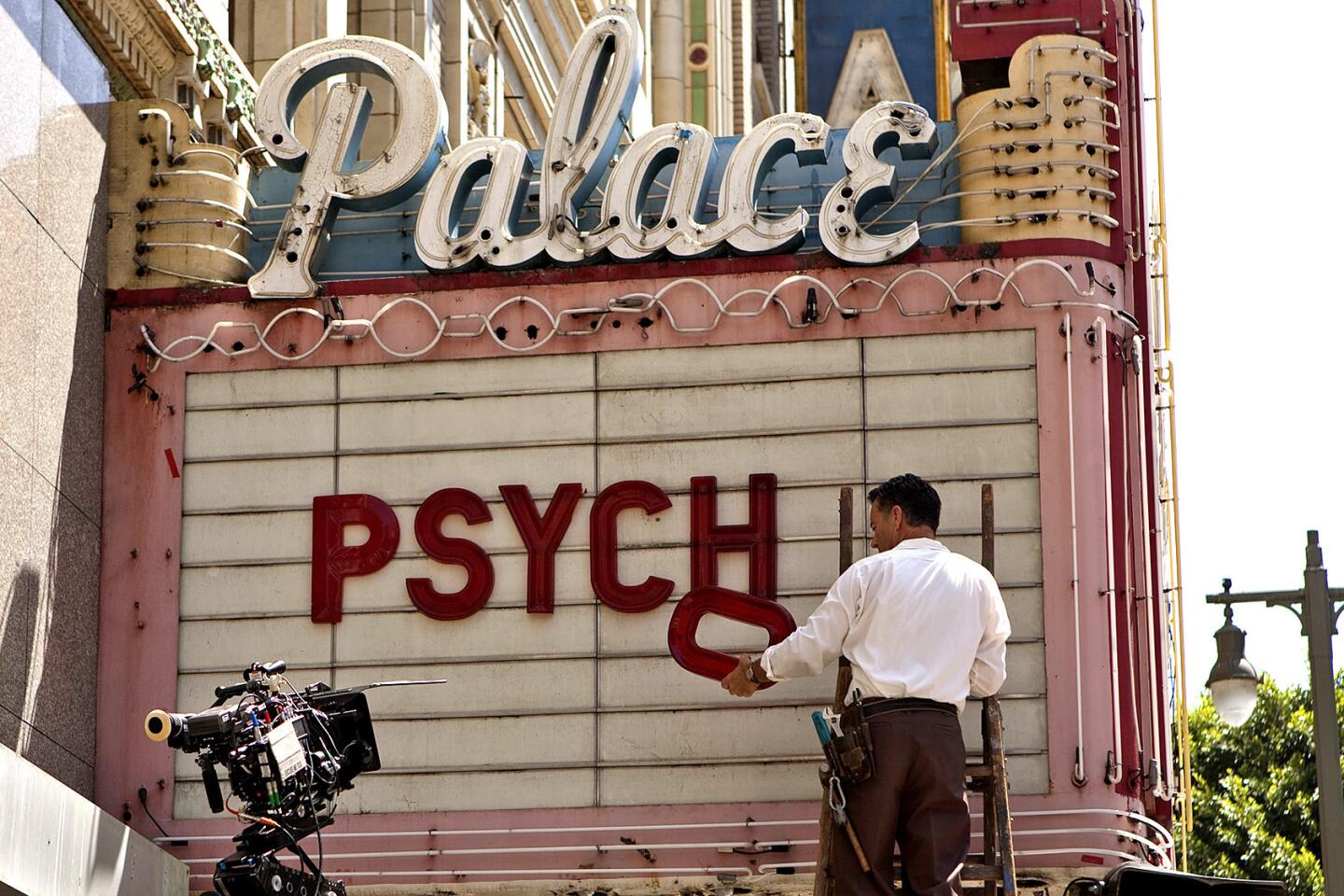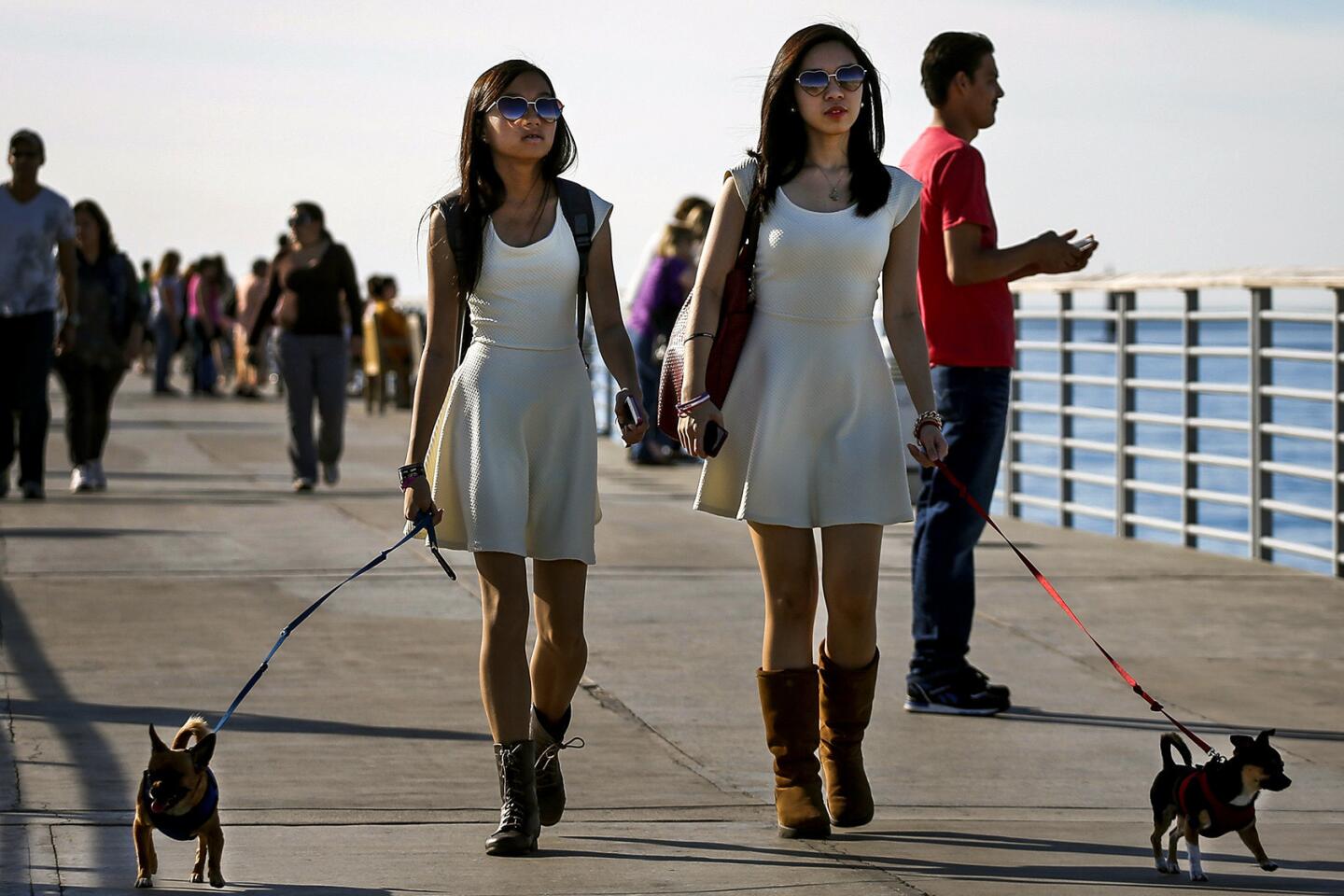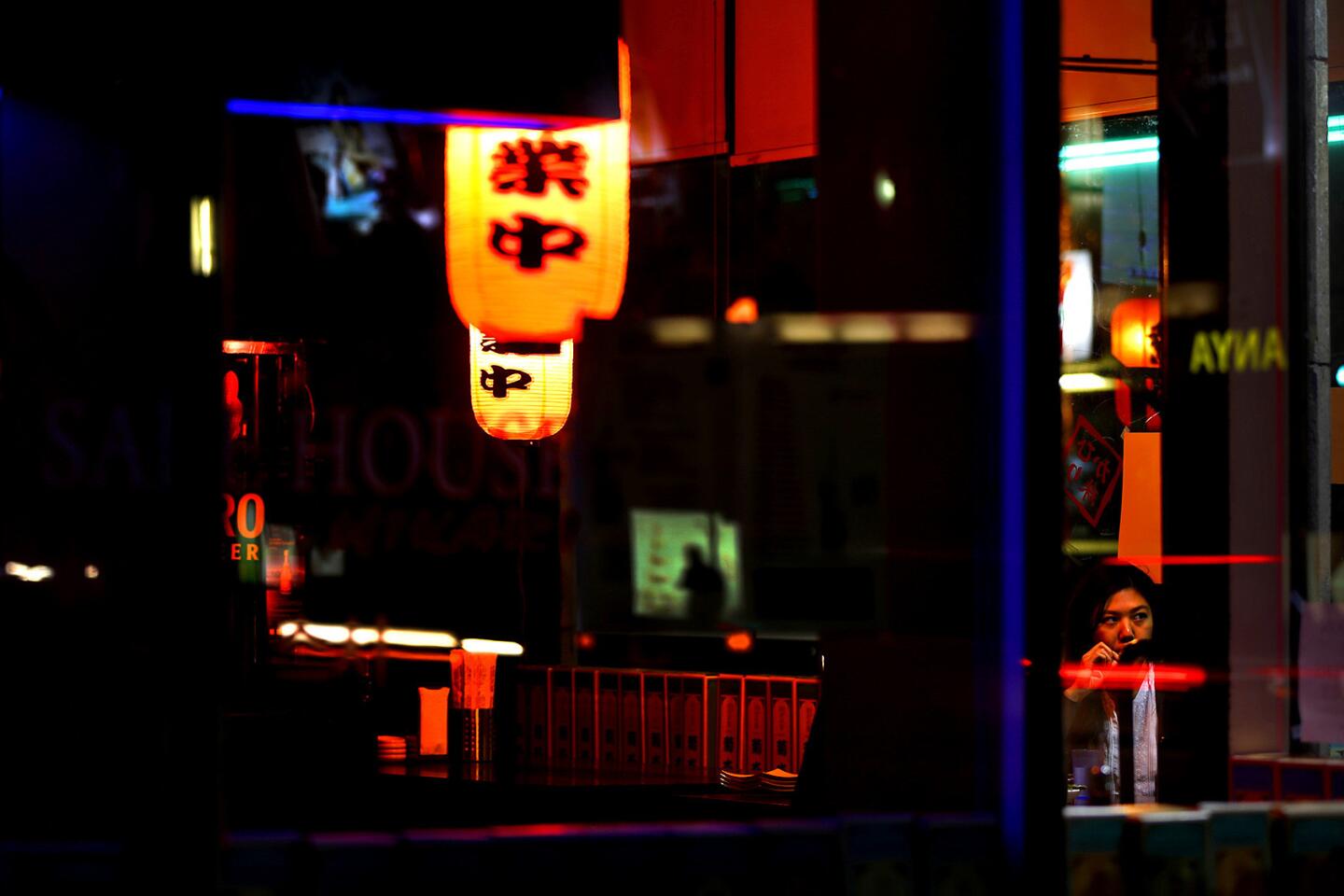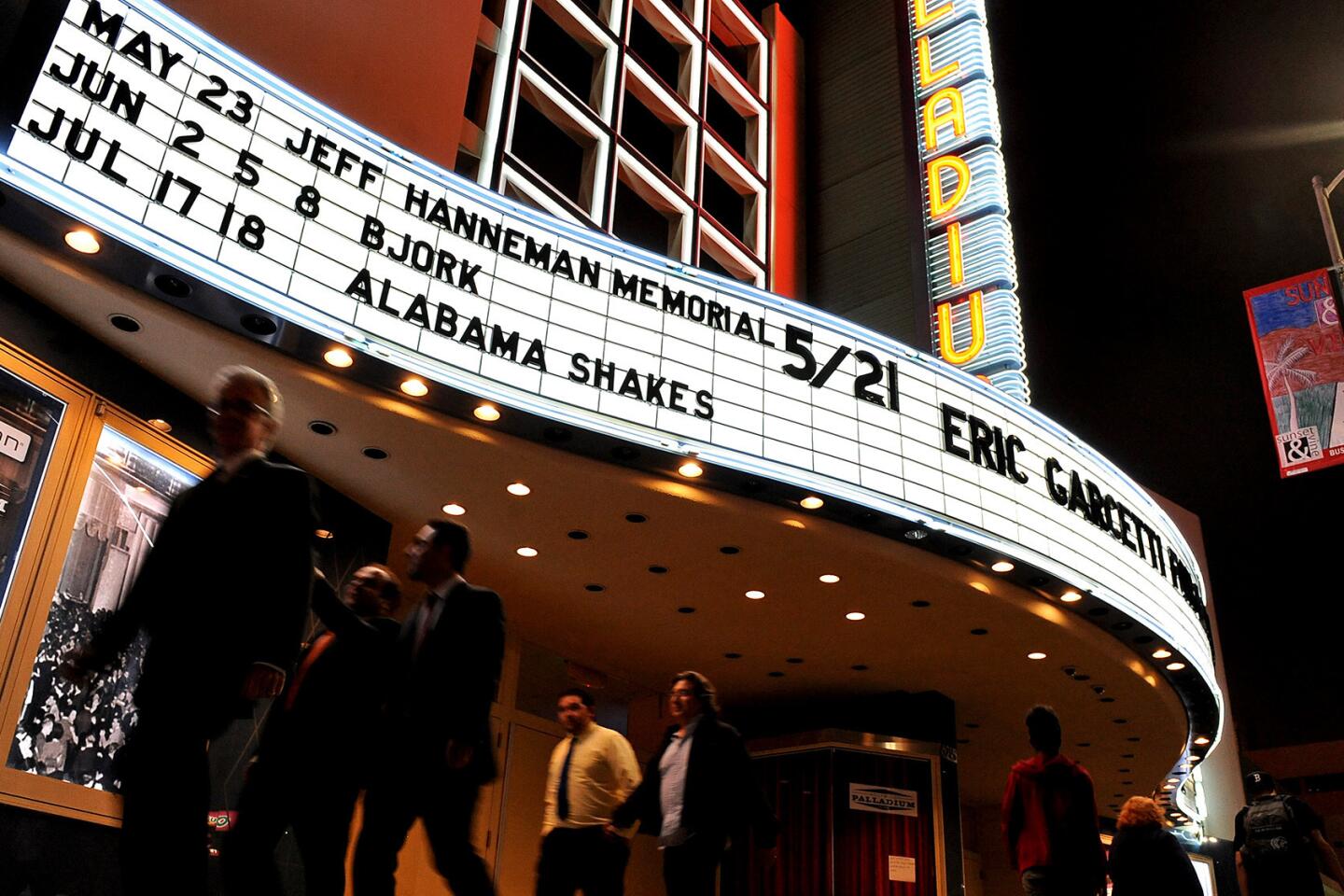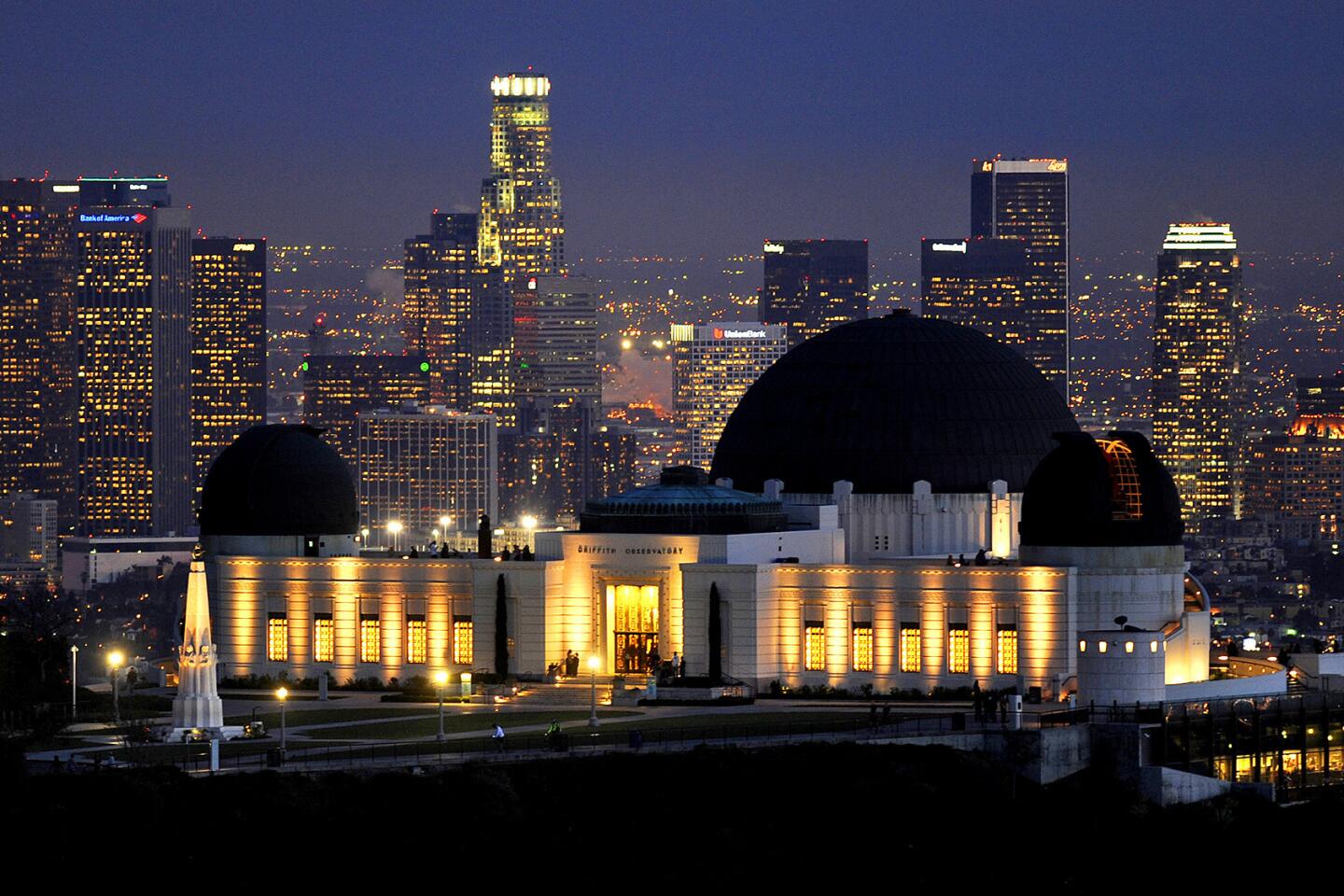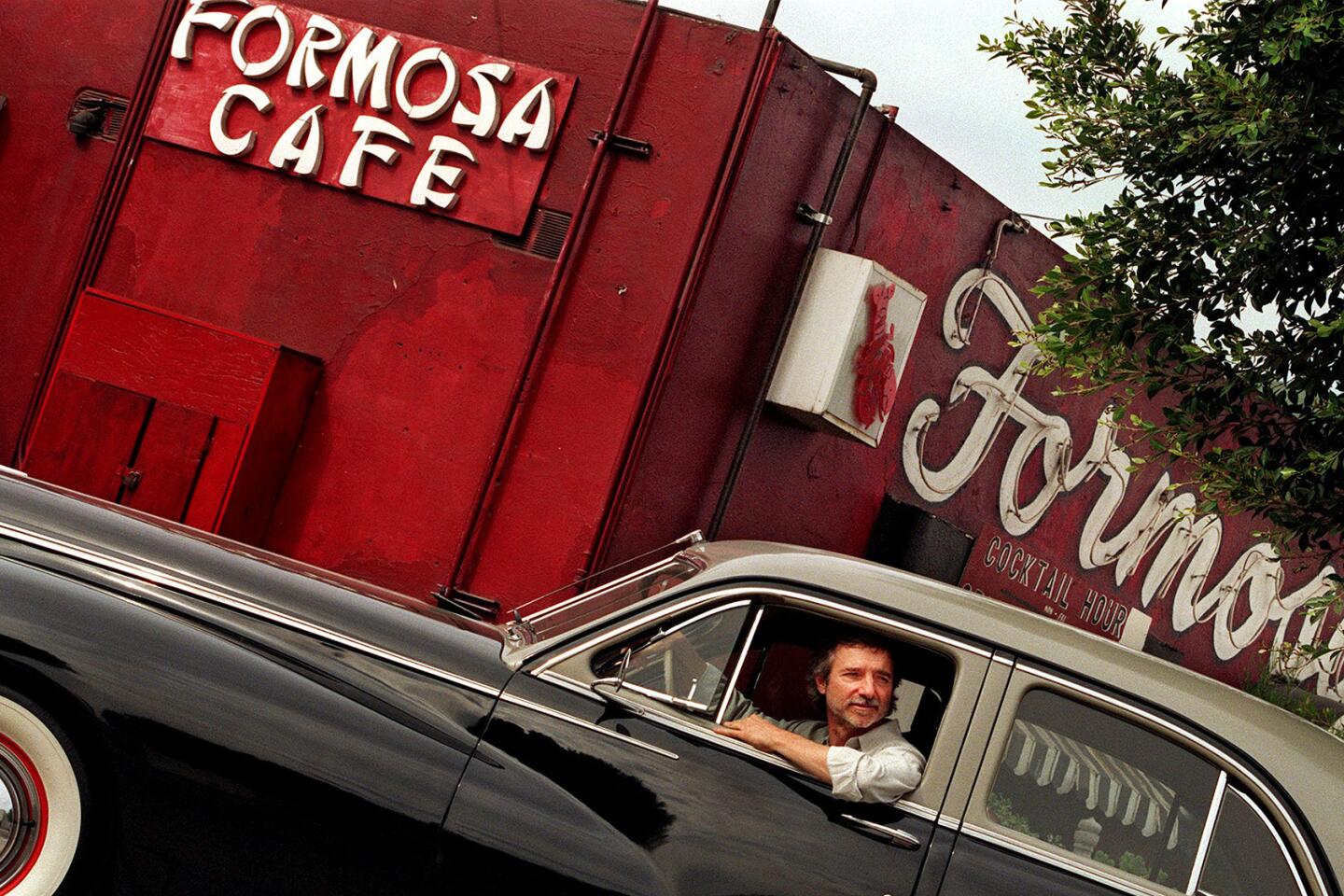‘La La Land’ looks beautiful, but gentrification makes it harder for old Hollywood to play itself
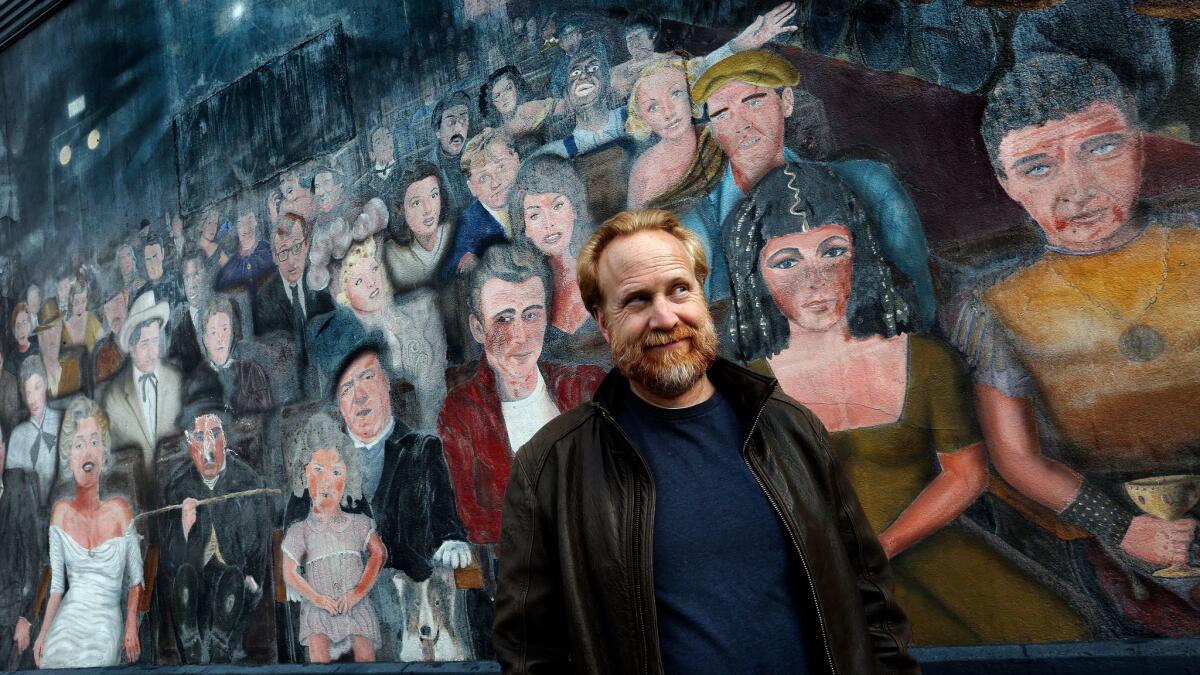
- Share via
As young artists on the hunt for love in “La La Land,” Ryan Gosling and Emma Stone romance their way through the Hermosa Beach pier, the SmokeHouse restaurant in Burbank and the Griffith Observatory at twilight.
But the movie’s nostalgic depiction of the area’s vintage sites conceals a tougher industry reality: Retro Los Angeles locations are becoming more difficult for movie and TV crews to access as historic structures continue to vanish and the rapid gentrification of downtown and Hollywood itself imposes an increasing number of hurdles for local productions.
These neighborhoods have long played a vital role in the history of the film industry, providing locations for classic scenes like Harold Lloyd dangling from a clock in downtown in the 1923 film “Safety Last!” and James Dean engaged in a knife fight at the observatory in “Rebel Without a Cause.”
Location managers say there is still enough old Tinseltown in existence to play itself, but they are concerned that the influx of retail and residents to formerly underdeveloped areas is rendering those historic cityscapes more inaccessible and making the filming-permit process more onerous. The changes come as L.A. is fighting runaway productions to other states and countries that offer attractive financial incentives.
“You have many more neighbors you have to talk to,” said Robert Foulkes, the location manager for “La La Land.” “The days of being able to just go down there [to downtown and Hollywood] are gone. There are so many people to get permission from.”
Getting permission can sometimes be as straightforward as asking the owner of the Retro Dairy Mart — a drive-thru eatery in Burbank — to extend its front patio to achieve a certain camera angle of Gosling’s jazz pianist, he said. (The answer was yes.) But it also can require more legwork, as with a sequence featuring Gosling and Stone at the Grand Central Market in downtown.
First opened in 1917 and long a destination for working-class shoppers, Grand Central Market has undergone dramatic development in recent years, drawing throngs of hipsters and tourists. At the same time, its retro look makes it a popular shooting location, attracting commercials and TV productions.
Filming there requires permission from the owner and then from any vendor or tenant featured in a scene or is significantly affected by production, said Chris Farber, director of business development. The market has close to 40 vendors — up more than 60% in the past four years — and sees about 4,500 visitors on its busiest days, posing a logistical challenge for film crews.
“La La Land” filmed there for less than a day and shot while the market was open with customers.
Filming is becoming especially complicated in downtown’s Arts District, where Hollywood’s hunger for the neighborhood’s historic vibe is clashing with the area’s retail boom.
“You didn’t have to worry about interrupting a business 10 years ago, but now you do. It’s really good for the economy, but it’s tougher for the film industry,” said Paul Audley, president of Film L.A., the nonprofit organization that oversees film permitting throughout the city.
Recent productions to film in the Arts District include Netflix’s upcoming “Bright,” starring Will Smith, and ABC’s canceled Marvel series “Agent Carter,” set during the 1940s.
The demolition this year of the historic 6th Street Bridge deprived the Arts District of one of its most popular filming locations. “Agent Carter” as well as the 2011 movie “Drive” were shot on and around the 1932 structure.
What’s more, the neighborhood is “now full of coffee shops,” said Nancy Haecker, a film and TV location manager who worked on “Agent Carter.” “It used to be that the warehouses were occupied by garment businesses, and we could work things out. Now, those properties are too valuable.”
The surge in residents in downtown means productions that shoot at night have to survey more people to comply with local filming rules, according to Film L.A. The mandatory survey is used by the L.A. Police Department, which is responsible for issuing permits to determine whether a production can operate beyond the normal window of 6 a.m. to 11 p.m. for residential areas.
Still, the Arts District is in high demand. “There’s not one day where there’s not shooting,” said Miguel Vargas, head of the neighborhood’s business improvement district.
He said there is often friction between productions and local business owners over the scarcity of parking in the increasingly congested neighborhood. Many formerly empty lots and desolate streets are now under development, depriving crews of space needed to park trucks and trailers.
Film crews also have chafed at the proliferation in downtown of Metro Bike Share stands and green bike lanes, which they say spoil the distinct look of the area.
You didn’t have to worry about interrupting a business 10 years ago, but now you do. It’s really good for the economy, but it’s tougher for the film industry.
— Paul Audley, president of Film L.A.
Similar frictions are playing out in Hollywood, where real estate development along the La Brea Avenue corridor has boomed in the past two years as several luxury condominium complexes have risen near Santa Monica Boulevard. But it also has resulted in the demolition of historic small buildings and homes — structures not important enough to merit landmark status but whose collective disappearance has altered the historic feel of many blocks.
For period shoots, this represents a setback because it “breaks a pattern for a streetscape or look of an area,” said Adrian Scott Fine, director of advocacy at the L.A. Conservancy.
“New buildings are constructed in and around historic ones,” said Mandi Dillin, a location manager for HBO’s “Westworld.” “The way the surrounding landscape changes is what can complicate filming.”
The exterior shots of the Formosa Cafe in “L.A. Confidential” would be almost impossible to get today because of the adjacent Target shopping plaza and giant construction cranes behind it, according to location manager John Panzarella, who worked on the 1997 film as well as this year’s “Hail, Caesar!”
“Gentrification is not our friend,” he said.
The scarcity of untouched historic locations was felt during the making of “Hail, Caesar!,” which was set in postwar Hollywood. A nightclub scene required filming at three different vintage locations that later were pieced together in the editing room: the Fonda Theatre for the exterior; the Hollywood Palladium for interiors; and the Chapman Plaza in Koreatown for some reverse shots.
Even neighborhoods on the cusp of gentrification no longer can double for themselves. The most-recent season of Amazon’s “Transparent” featured scenes set in Boyle Heights during the ’50s. But the crew found that the neighborhood’s skyline had changed too much.
“If you look at pictures from the era, there’s not much in the background. Now, you see things that are more contemporary that you can’t work around,” said Cat Smith, production designer on the series. Instead, the crew shot in the West Adams neighborhood, which she said has retained more of its suburban postwar feel.
L.A. would seem to have the monopoly on vintage L.A. locations, but some recent shoots have left the city altogether. “The Nice Guys,” this year’s detective comedy set in L.A. during the ’70s, was filmed primarily in Georgia, while last year’s “Trumbo,” set in 1940s Hollywood, was shot in Louisiana. Both states offer lucrative tax incentives that have drawn numerous productions in recent years.
Location managers say advances in post-production digital technology make it easier to get the perfect period shot because anachronistic eyesores like satellite dishes no longer have to be manually removed.
“Now they leave them in and paint them out later,” said Caleb Duffy, a location manager who worked on this year’s “Cafe Society,” set in Depression-era Hollywood. “It’s the cheaper option.”
He said digital airbrushing was used in the 2012 movie “Hitchcock” to remove signage and other contemporary markings around the historic Palace Theatre in downtown L.A. for exterior scenes set during the ’60s.
The upcoming FX series “Feud,” about the rivalry between Bette Davis and Joan Crawford, is being shot entirely in L.A. The crew recently used the Santa Monica Civic Auditorium to play itself as the venue for the 1963 Academy Awards ceremony.
“The building still looks great,” said Foulkes, the “La La Land” location manager who also is working on “Feud.” But he said other vintage locations he wanted to use have fallen victim to development, like the old Hollywood haunt Perino’s Restaurant, which was demolished several years ago to make way for apartments. The crew replicated the eatery on a set.
“There are all kinds of buildings we wished were still around.”
Twitter: @DavidNgLAT
ALSO
‘Very tough’ Carrie Fisher in intensive care after a cardiac episode on flight to L.A.
A&E pulls controversial reality show about the KKK after learning producers paid hate-group members
More to Read
Inside the business of entertainment
The Wide Shot brings you news, analysis and insights on everything from streaming wars to production — and what it all means for the future.
You may occasionally receive promotional content from the Los Angeles Times.
